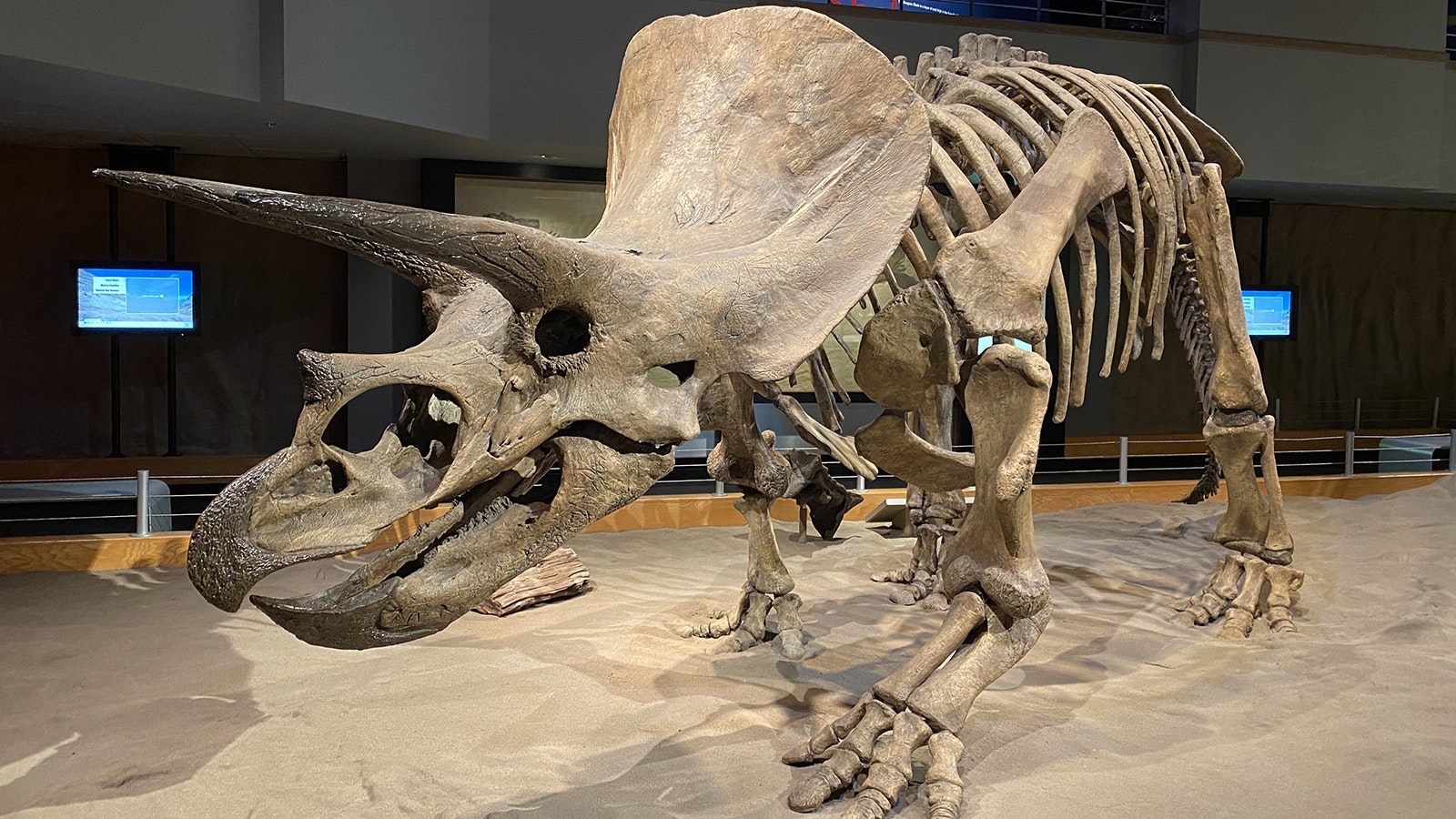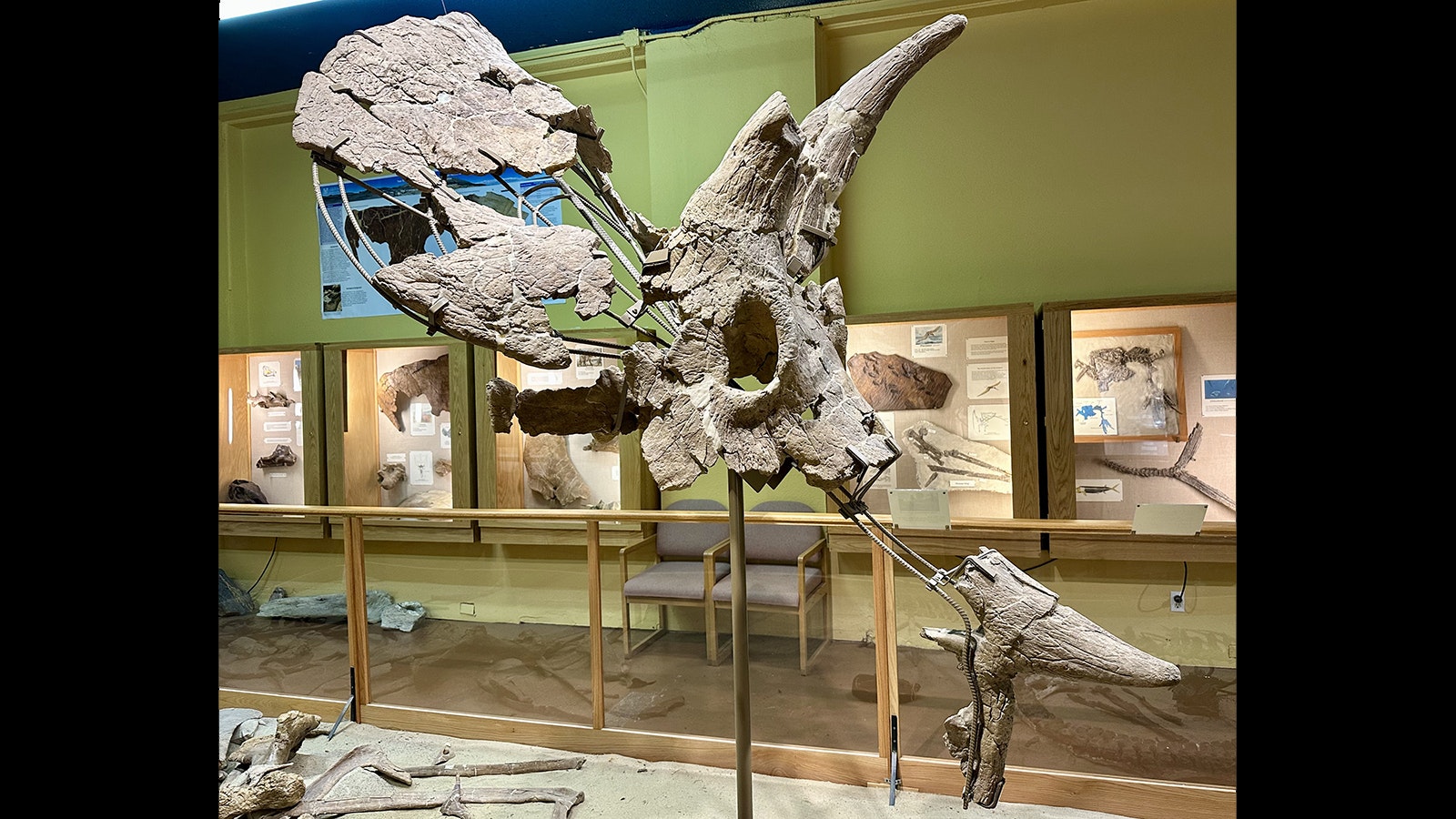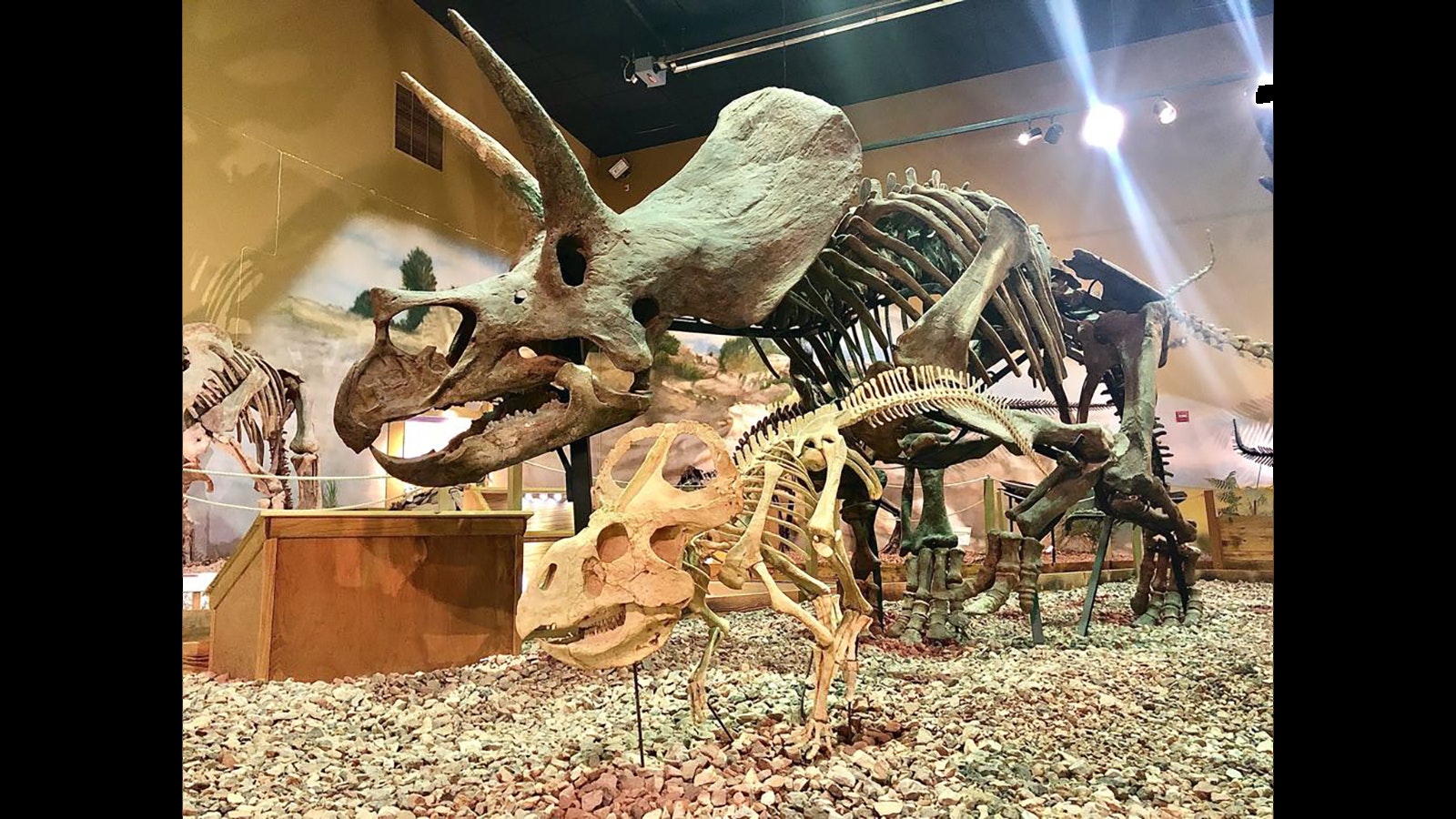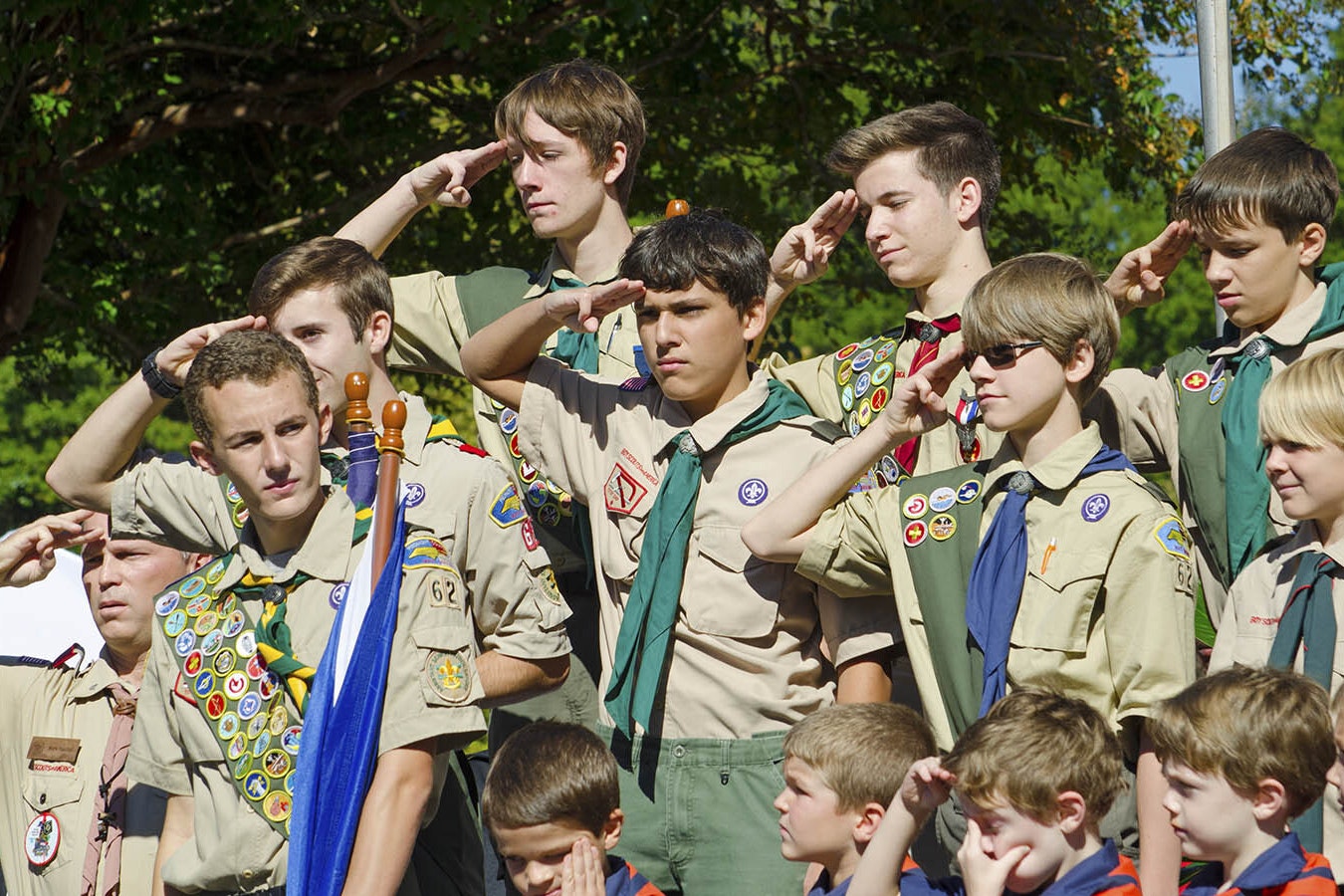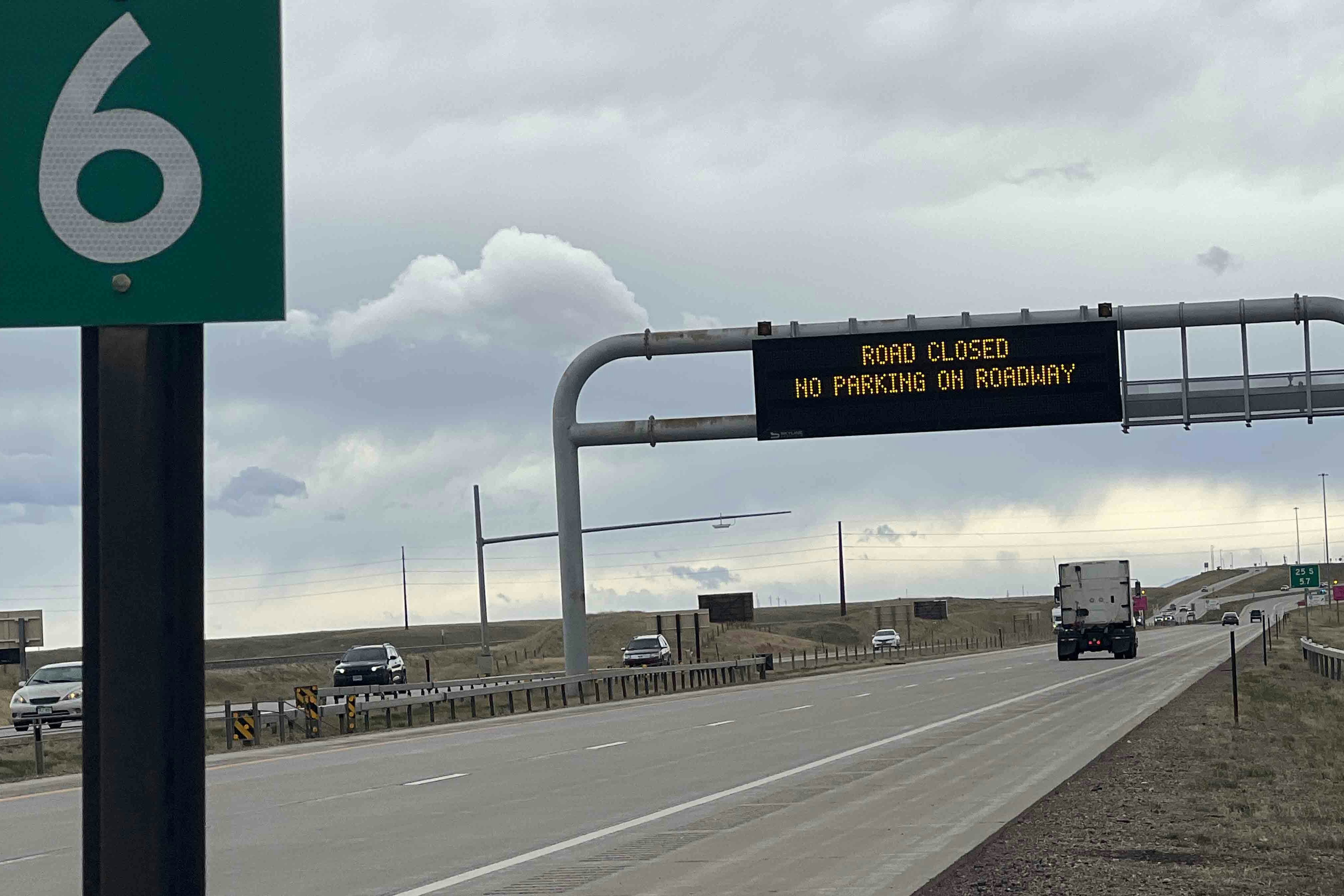In a world dominated by Tyrannosaurus rex, Triceratops might seem like a lackluster choice to be Wyoming’s official state dinosaur despite its status as one of the most famous and recognizable dinosaurs.
But folks who know a thing or two about Wyoming dinosaurs say it’s one of the best choices, and it was officially adopted as the state dinosaur on March 18, 1994.
While it’s not prehistoric rock star like the T. rex or made famous by Hollywood like Velociraptor, the truth is, Triceratops is everywhere in Wyoming — and Wyoming Triceratops are everywhere all around the world.
“They’re like a dime a dozen. It’s a very common dinosaur,” said Jessica Lippincott, author of “Wyoming’s Dinosaur Discoveries.”
A Brief History
Triceratops is more than Wyoming’s state dinosaur, it’s Wyoming’s first dinosaur.
The first dinosaur ever excavated in Wyoming was an incomplete, headless skeleton found in Sweetwater County in 1872.
Edward Drinker Cope, one of the two paleontologists waging the legendary Bone Wars in Wyoming and throughout the American West, named the new dinosaur Agathaumus sylvestris, the "marvelous forest-dweller.”
The short version of the Bone Wars is a multi-decade effort by two East Coast paleontologists and their private army of excavators to find the most, biggest and best dinosaurs, mainly focused on Jurassic giants found at Como Bluff near Medicine Bow.
Their antagonistic (and childish) efforts resulted in hundreds of tons of dinosaur fossils shipped back East and the discovery of iconic dinosaurs like Triceratops, Brontosaurus, Stegosaurus and dozens of others.
In 1889, Cope’s archenemy in the Bone Wars, Othniel Charles Marsh, was the one who named Ceratops horridus, the “horrible horned face.” Research of the massive skull found in Converse County revealed a horn on the nose in addition to two others over the eyes, which is how Ceratops became Triceratops.
The holotype specimen of Triceratops, now at Yale University’s Peabody Museum in New Haven, Connecticut, was recovered by paleontologist John Bell Hatcher, who found and excavated more than 30 Triceratops skulls for Yale in just two years.
Further research revealed that Agathaumus was Triceratops all along, so it became one of the dozens of Bone War dinosaur casualties. The original specimen is part of the collections of the American Museum of Natural History in New York (AMNH).
In 1905, the Smithsonian Institution mounted the first Triceratops skeleton, an amalgamation of 10 specimens collected from various places in Niobrara County.
Once they had a Triceratops, everyone wanted one.
These discoveries elevated Triceratops into the highest pantheon of legendary dinosaurs. Museums around the nation and the world were inspired to come to Wyoming and find their own.
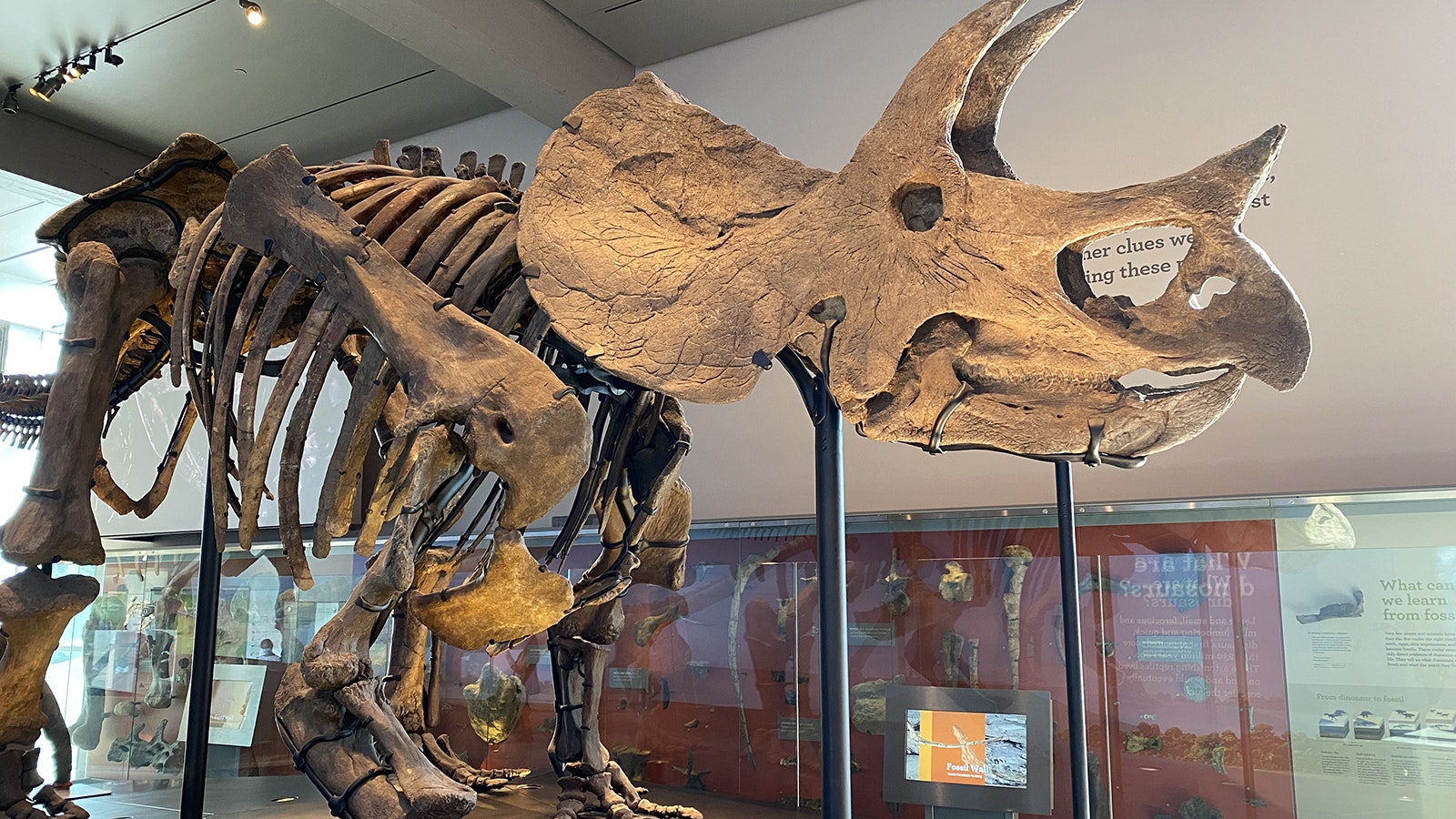
Triceratops Then And Now
Over the years, Lippincott has worked on several Triceratops sites all over Wyoming. She can attest firsthand that they’re everywhere.
“I've been in the Lance Formation and found several occipital condyles of Triceratops lying on the surface,” she said. “Finding one, especially part of the skull, is pretty easy.”
The occipital condyle is part of the skull that connects it to the first vertebra of the neck. Like all vertebrate animals, Triceratops only had one. So, every occipital condyle represents one individual Triceratops.
There’s a reason why Triceratops is one of the most common dinosaurs today. It was one of the most common dinosaurs 66 million years ago, right before the asteroid impact that marked the end of the dinosaurs' reign.
In fact, some studies have suggested that more than 40% of the dinosaurs living in North America at the end of the Cretaceous Period were Triceratops.
“Cowboy Rex” Mike Harris ranches cattle and digs dinosaurs near Newcastle. His excavations in the Lance Formation were featured on the Discovery Channel show “Dino Hunters.”
At this point, Harris might question if he has more cattle or Triceratops on his ranch.
“We’ve got Triceratops coming out of the ground everywhere,” he said. “They’re so plentiful.”
For Harris, every dinosaur discovery is exciting. But he admits that finding another Triceratops can be a letdown.
“At first, you think you got something really good, but that turns into a bone bed instead of a complete specimen,” he said. “You really can't identify stuff until you get the proper bones, so it’s pretty exciting when you get something that you don't know what it is. And it’s a little frustrating when it winds up being another Trike.”
Harris has discovered between 15 and 20 Triceratops sites around Newcastle. He believes one of those sites might contain between 10 and 20 different animals, and they’re all or mostly all Triceratops.
There are so many Triceratops in eastern Wyoming that Harris often puts new sites he suspects to be Trike low on his priority list. There’s plenty more where that came from.
“It's just a menagerie of bones laying all over the place,” he said.
National And International Appeal
Triceratops might be common, but there’s still a healthy appetite for the three-horned face in museums around the globe. An argument can be made that Triceratops is Wyoming’s best international representative.
Natural history museums in New York, Los Angeles, Indianapolis and Houston have Wyoming Triceratops on display. Many other museums in Chicago, Atlanta, Cleveland and dozens of other places acquired replicas of Wyoming Triceratops.
Internationally, museums in France, Germany, Belgium and Switzerland have Triceratops fossils acquired from Wyoming. And in recent years, the international appetite for Wyoming dinosaurs, including Triceratops, is growing.
The Naturalis Biodiversity Center in Leiden, Netherlands, has been excavating a bonebed containing a purported herd of Triceratops. They intend to fill an entire exhibit in their museum with multiple Triceratops skeletons, using 3D printing to fill in the missing pieces.
When a museum wants a Triceratops or two, they often go to Wyoming to get it. And if they can’t find a skeleton, a skull will suffice.
“They're usually easy to excavate, and there's a lot of Lance Formation in Wyoming,” Lippincott said. “Finding one, especially part of the skull, is easy. The skull is huge and fossilizes a lot better than the rest of the specimen.”
Where In Wyoming?
It’s easy to find Triceratops in Wyoming. Its fossils have been found in at least 11 of Wyoming's 23 counties (Big Horn, Carbon, Converse, Fremont, Goshen, Hot Springs, Natrona, Niobrara, Park, Sweetwater and Weston counties).
But for anyone who's not outdoorsy, it can be challenging to find Triceratops.
Only two museums in Wyoming have real Triceratops specimens on display. The Paleon Museum in Glenrock has the skull and skeleton of the locally found “Lady Stephanie” from the aptly named Triceratops Gulch, while the Wyoming Dinosaur Center in Thermopolis displays the state’s first ever mounted triceratops, assembled nearly 90 years after the Smithsonian revealed its own.
The Wyoming State Museum in Cheyenne has an exact copy of Thermopolis’s Triceratops on display. A replica of the AMNH’s Triceratops, found in Niobrara County, roams the halls of Western Wyoming Community College in Rock Springs.
Lippincott has a simple explanation for why Wyoming’s state dinosaur is so rare in Cowboy State museums. There’s only so much space and so much money to excavate, assemble and display a dinosaur with a 6- to 8-foot-long head and a 30-foot body, let alone a herd of them.
“There's not a lot of space to put them,” she said. “Museums are only so big and have only so much money.”
Safe Status
Is Triceratops the coolest choice for Wyoming’s State Dinosaur? It lacks the impressive intimidation of T. rex or the bizarre build of Stegosaurus, the state fossil of Colorado.
However, it’d be hard to find a more appropriate state dinosaur than Triceratops. Over the years, Harris has found and excavated at least seven skeletons of the state dinosaur, all between 22% and 77% complete.
Harris might be up to his eyeballs in Triceratops fossils, but he can’t think of a better dinosaur to represent the Cowboy State.
“I think that any dinosaur would be appropriate for the Wyoming dinosaur,” he said. “I like them all, but Triceratops is so plentiful. And it’s always exciting to find one.”
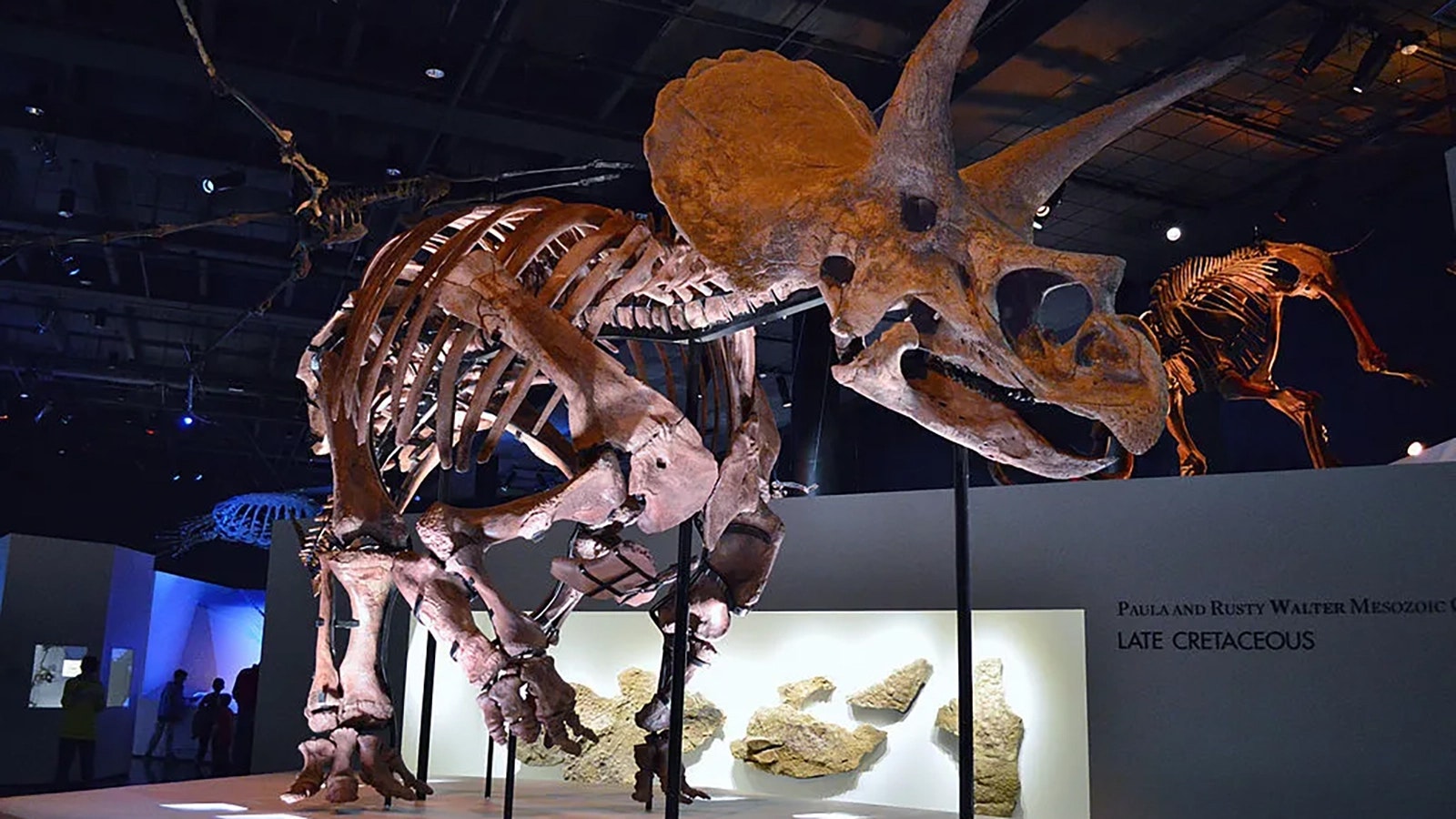
Andrew Rossi can be reached at arossi@cowboystatedaily.com.

